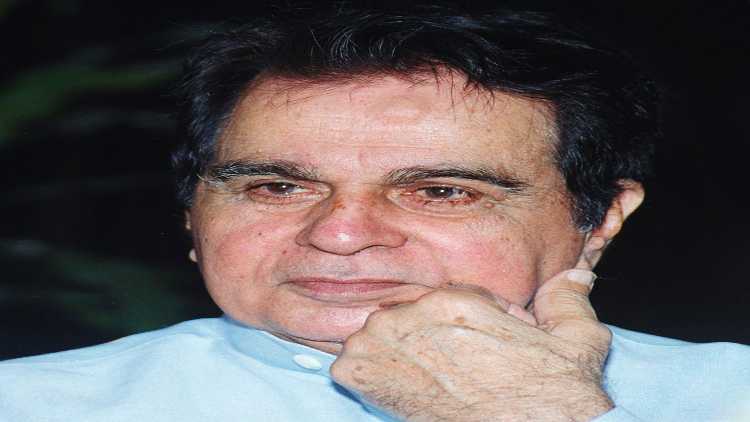
New Delhi
Dilip Kumar is Bollywood’s first actor who defied the trend of good looks as being the main qualification for a hero; his unique way of dialogue delivery created a thespian out of him on the celluloid as he played memorable characters in at least 65 blockbuster Hindu films spanning around five decades.
Dilip Kumar was always the benchmark for the actors to come as his legacy ran across the undivided Indian subcontinent, both in terms of his personal life and his appeal as an actor.
Born as Mohammad Yusuf Khan in Peshawar into a wealthy fruit merchant’s family Dilip Kumar came to Pune after the family fell on bad days due to collapse of the business in the second world war.
Seven decades later his ancestral home along with that of his friend Prithviraj Kapur has been bought by the state government of Khyber Pakhtunkhwa for preservation. Dilip Kumar had used his leverage with Pakistan for India twice. Former Pakistani foreign minister Khurshid Mehmud Kasuri has written that Dilip Kumar had secretly travelled to Pakistan to convey the message of peace from India’s top leadership to the Pakistani leaders.
He had even spoken to Nawaz Sharif during the Kargil war and asked him why Pakistan had launched the offensive against India. Kasuri writes that Nawaz Sharif was pleasantly surprised to hear the voice of Dilip Kumar on phone.
For the record, Dilip Kumar quit acting in 1998. That was the year Yusuf Saab -- as he was widely known to friends and fans alike -- last faced the camera for Umesh Mehra's Qila. This film gave Dilip Kumar a dual role as protagonist and antagonist (or 'hero' and 'villain' as masala filmdom loves classifying). Somewhere in those portrayals lay the key to why he was hailed as the phenomenon back in the day, when they showered him with epithets as Tragedy King, and the Great Method Actor of Bollywood.
There are tales about Dilip Kumar's method of acting. The most widely-known pertains to the self-produced Gunga-Jumna, the Nitin Bose directorial of 1961 that, many whispers, was ghost-directed by the actor himself.
Coming immediately after his 1961 superhit Mughal-e-Azam, Dilip Kumar is said to have run all around the studio premise, to the point of collapsing, in order to get the right look and feel for his death scene in the film. The performance is counted among one of the finest by any male actor in mainstream Bollywood.
If the subject of method acting largely defines Dilip Kumar's oeuvre, the actor himself tried to deconstruct it in his autobiography "Dilip Kumar: The Substance And The Shadow", released in 2015.
"I am an actor who evolved a method, which stood me in good stead," he says.
Though his first film Jawar Bhatta came in 1944, he quickly became a busy star He had as many as five releases in 1948 -- Ghar Ki Izza, Shaheed, Mela, Anokha Pyar and Nadiya Ke Paar. By the time the last film of the year released and went on to become the biggest hit of 1948, Dilip Kumar was one of Bollywood's exciting new sensations along with two others -- Raj Kapoor and Dev Anand.
The trio would go on to define Hindi cinema in the next decade and be called Bollywood's Triumvirate. Together, they continue to shine the brightest at the mention of the Golden Fifties of Hindi cinema. While each of them carved a niche to ensure greatness, somewhere their individual images as stars summed up the essence of an era that continues to be regarded as the classiest that Hindi cinema has seen.
Dilip Kumar would collaborate with Raj Kapoor, incidentally said to be his childhood friend from Peshawar, on Mehboob Khan's 1949 love triangle Andaz that co-starred the inimitable Nargis. The film was a superhit upon release and, for the second consecutive year, Dilip Kumar would be part of the year's highest-grossing film with Andaz.
That was just the start of a dream run. The fifties saw him deliver innumerable superhits including Joganand Babul (1950), Taranaand Deedar(1951), Aan (1952), Footpath(1953), Amarand Daag(1954). Devdas, Azaadand Uran Khatolafollowed in 1955, Musafirand Naya Daurreleased in 1957. A spate of memorable roles continued with Yahudiand Madhumatiin 1958, and Dilip Kumar ended the decade with Paighamin 1959.
If the decade that ended established the method about Dilip Kumar's stardom in its versatility, it also prepared fans for the one role that continues to draw automatic recall when you think of Dilip Kumar. The decade started with K. Asif's epic Mughal-e-Azam for Dilip Kumar, after the successful Kohinoor the same year. The film became the highest-grossing Hindi film of all time upon release.
After the success of Gunga Jumna in 1961, Dilip Kumar would again essay a dual role of a very different mood in Ram Aur Shyam (1967). His other memorable roles in the decade were Aadmi and Sangharsh (1968).
He started out in the seventies with Gopi (1970). The sixties and the seventies, however, saw the actor slow down in terms of solo releases. The advent of Rajesh Khanna's brand of romance in the late sixties, and Amitabh Bachchan's angry young man in the mid-seventies, changed Bollywood trends. The great socials of the fifties and the sixties seemed to be on the wane. Dilip Kumar decided to take a break in 1976, after Bairag.
He would come back, of course, in Manoj Kumar's 1981 release Kranti. The film was a multi-starrer, Bollywood' chosen genre of the eighties, and Dilip Kumar found ready takers in such lavishly-mounted productions that needed multiple heroes across age groups. He was notably seen in the Subhash Ghai multi-starrer Vidhaata (1982) and Karma (1986) as well as Saudagar in 1991. Two-hero or multi-hero projects as Shakti (1982), Mazdoor (1983), Mashaal (1984) and Duniya (1984) mark his last phase as an actor, one that culminated with Qila in 1998.
